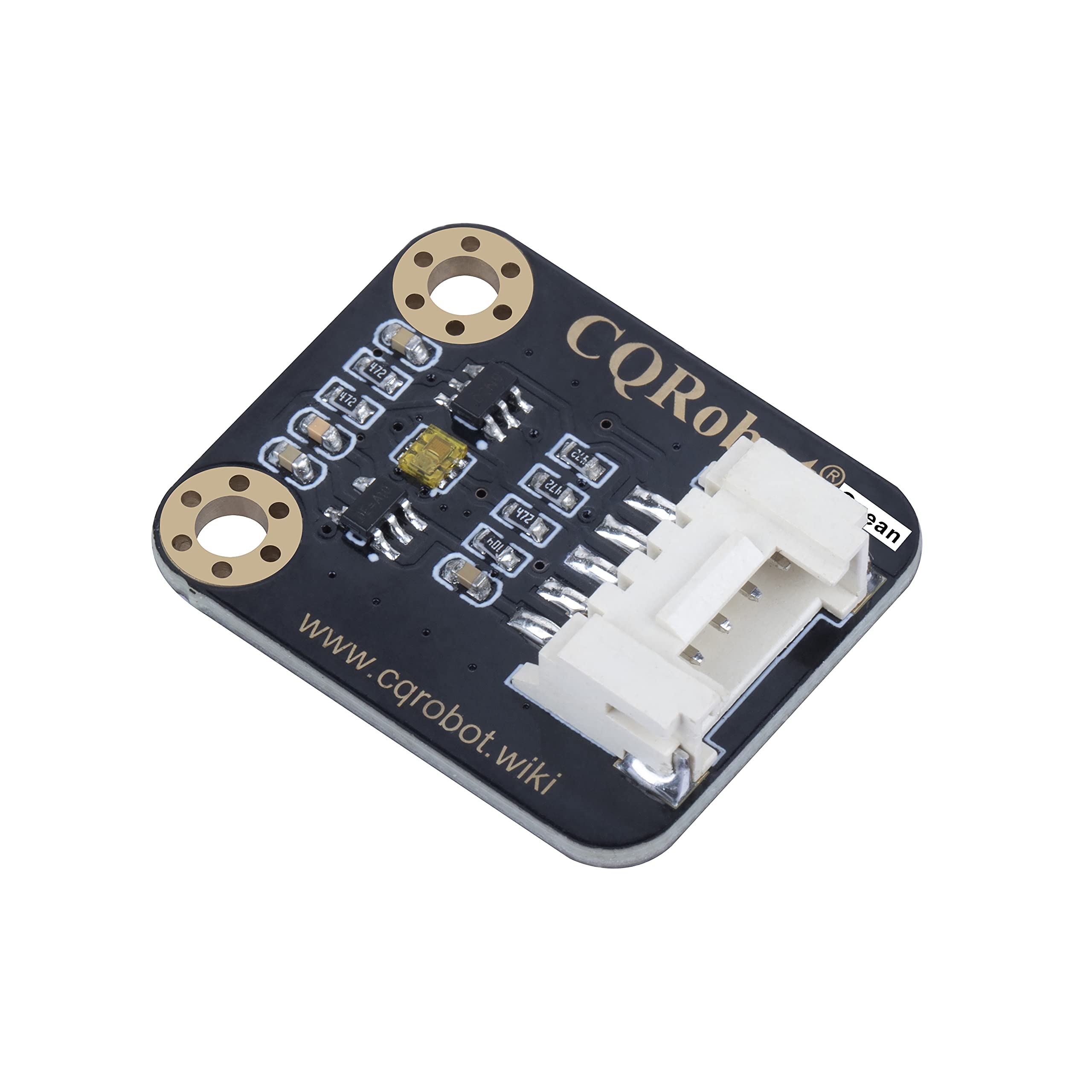









CQRobot TSL25911FN Ambient Light Sensor Compatible with Raspberry Pi, Arduino, STM32. 0 to 88000Lux Detection Range, 600M: 1 Wide, for Industry, Mobile Phone, Computer, Lighting, GPS, etc.
| Manufacturer | CQRobot |
| Part number | CQRTSL25911 |
| Item Weight | 18 g |
| Package Dimensions | 7.01 x 5.11 x 1.7 cm; 18 Grams |
| Item model number | CQRTSL25911 |
| Size | Ambient Light Sensor |
| Colour | TSL25911FN |
| Style | TSL25911FN Ambient Light Sensor |
| Batteries included? | No |
| Batteries Required? | No |
B**E
Top
Top
F**K
Funziona bene, ma occhio al cablaggio
nulla da dire, ma c'è voluto un po' prima di capire che sul sito cqRobot il cablaggio indicato per il Raspberry è sbagliato... allego l'immagineil rosso va sull'alimentazione (pin1)!
K**E
Works, but CQRobot Arduino software is awful.
This product works. However, the CQRobot software for the Arduino sucks. When unzipped and installed correctly it wouldn't appear in the IDE. Turns out I was using an ESP8266 and the library file was labeled as "avr" only. So, I fixed that and it loaded and worked. However, since it wasn't handled as a library it was difficult to use in an existing project I had. So, I tried Adafruit's equivalent library and viola - it works great. But in looking the Adafruit version up, I discovered their version is less expensive, and it has better support. So, I'm facepalming myself for not doing more research when buying this in the first place.
C**N
Ottimo sensore di luminosità. Peccato per i cavi non facilmente sostituibili.
Come da descrizione, si tratta di un modulo TSL2591X per misurare l'intensità della luce (sia nello spettro visibile che infrarosso) su un intervallo molto ampio (da circa 200 uLux a 88000 Lux). Il sensore viene consegnato in una pratica scatolina di plastica protetto in una busta antistatica. Collegato ad un Raspberry PI ha funzionato al primo colpo usando le librerie Python Adafruit. La scheda appare di ottima qualità costruttiva.Il prodotto meriterebbe cinque stelle, ma ne do solo quattro a causa della scelta infelice di dotare la scheda di una presa anziché dei normali pin che di solito si trovano in questo genere di dispositivi. Viene fornito un cavetto di collegamento con cinque fili con terminali femmina. Questi terminali vanno bene per collegare il dispositivo ai pin GPIO di un Raspberry PI, ma non vanno bene per schede Arduino o per breadboard, che invece necessiterebbero di terminali maschio. In questi casi è quindi necessario dotarsi di un cavo diverso (operazione non banale, dato che occorre procurarsi un connettore compatibile con la presa sul sensore), oppure utilizzare dei cavi maschio-maschio intermedi.
T**R
I works perfectly fine!!
I used to detect the amount of light in my greenhouse using a Raspberry Pi 4, reporting to MySQL database.
Trustpilot
1 month ago
5 days ago